|
A highlight of the 2023 OzGrav Retreat was the presentation of the inaugural OzGrav Achievement Awards, recognising our members’ outstanding contributions and achievements. Below are the winners, runners-up, and highly commended individuals, along with brief summaries of their nominations. Congratulations to all the recipients!
Advancing Equity Award Winner: Sareh Rajabi Sareh, who joined the ANU OzGrav node in 2017, has played a pivotal role in promoting equity, diversity, and inclusivity (EDI) at the ANU node. Through initiatives such as creating a quiet room, establishing a culture bookshelf, implementing an anonymous feedback system, and providing mental health and mentoring support, Sareh has significantly contributed to fostering a cohesive and inclusive workplace culture, transforming the ANU node's environment over the years. Cross-Nodal Collaboration Award Winner: Bram Slagmolen Bram is a unique contributor to OzGrav, having established collaborations with every node, engaging in diverse projects such as student exchanges, site selection studies, and commissioning efforts. His impactful leadership extends to mentoring personnel across nodes and Centres of Excellence, highlighting his broad influence within the gravitational wave research community. Runners up: Bram Slagmolen, Ju Li, Zhang Ya, Aaron Jones, Sheon Chua, Carl Blair, Jennie Wright, Avanish Kulur Ramamohan The weekly connections of the Low-Frequency group, a collaborative effort between ANU and UWA, showcase a vibrant and supportive environment where research is shared with enthusiasm. The successful collaboration led to the installation of a displacement sensor from ANU into UWA's Gingin Laboratory, demonstrating the team's commitment to collaborative research and achieving extraordinary results in improving the interferometer performance. Highly Commended: Ryan Shannon, Valentina di Marco, Andrew Zic Valentina di Marco's collaboration across Monash, Swinburne, and CSIRO involved co-supervisors Andrew Zic and Ryan Shannon to support her growth and experience in radio astronomy and pulsar timing research. This project uncovered issues in IPTA pulsar timing analyses and led to important improvements to the background estimation code, helping to ensure confidence in subsequent results from PPTA and MeerTime. Mentor Award Winner: Karl Wette Since joining OzGrav in 2017, Karl has actively engaged in both formal and informal mentoring, formally supervising multiple PhD and Honours students with empathy and flexibility, particularly navigating challenges posed by COVID disruptions and mental health issues. In addition to serving as a LIGO Scientific Collaboration Continuous Wave working group co-chair, Karl provided substantial mentoring to students and postdocs globally, offering guidance on research aspects, standard software packages, and LVK policies. Runner up: Dan Brown The nomination for Dan describes how he consistently and proactively tries to improve the experience of students at the Adelaide node. He listens to concerns and suggestions and acts to make students’ lives better. He willingly uses his connections to create opportunities, like reaching out to potential PhD supervisors or connecting people with LSC colleagues. Dan is regarded as a go-to person for advice, contributing significantly to creating a positive and enjoyable office environment. Runner up: Andrew Melatos Andrew is nominated for being a wonderful mentor for his postdocs and students. Apart from the vast and deep knowledge on all the projects, he is a good mentor on a personal level. He incentivises his group to have a good work-life balance and is always promoting good physical and mental health habits. Andrew brings a wealth of knowledge and resourcefulness to discussions with his research group, contributing significantly to the progress of the mentee's research. His empathetic and understanding nature, along with consistent support in both academic and mental aspects, makes him deserving of acknowledgment and commendation. Highly Commended: Bram Slagmolen The nomination for Bram highlights his contribution to creating a positive working culture aligned with the award's spirit. Described as approachable, embodying scientific temperament, and maintaining a friendly nature, Bram is recognized for understanding individual student situations, providing tailored guidance, and consistently supporting the well-being of everyone in the centre. His creativity and innovativeness are also commended, contributing to a positive and enjoyable working environment. Highly Commended: Magdelena Kersting Magdalena was nominated for providing valuable guidance on career priorities, navigating challenging work situations, and research practices. Her support, relatable experiences, and introductions to colleagues have enhanced her mentee's experience within OzGrav, offering insights into potential research paths and contributing to a positive mentoring relationship. Research Translation Pioneer Award Winner: Zac Holmes, Peter Veitch, and Sebastian Ng Zac Holmes, Peter Veitch, and Sebastian Ng collaborated with the Australian Plant Phenomics Facility on a pioneering research translation project utilizing their expertise in 2um lasers for an industry application—weed control. The project showed success in preliminary tests, demonstrating the potential of OzGrav technology in providing an economic, organic, and herbicide-free solution for weed control in agriculture, marking a promising application beyond gravitational wave research with implications for the farming industry. Rising Star Award - Postdoc Winner: Johannes Eichholz Johannes, joining OzGrav ANU in 2019, introduced a new research field by designing a stable 2-micron laser architecture that has been adopted internationally. Recognizing the potential of an acquired optical coater, he successfully re-established it in a new clean room, securing a contract to coat main beam splitters for the next LIGO upgrade, showcasing his diverse skill set and hands-on approach in experimental physics. Runner up: Ryosuke Hirai Ryo was nominated for being a remarkable young scientist, making significant contributions to understanding high-energy transients through his deep physical insights and innovative computational models. Recognized for his broad knowledge of astrophysics, keen intellect, dedication, and leadership in research, Ryo is anticipated to be a rising star and a leading figure in theoretical astrophysics for years to come. Highly Commended: Zhang Ya Zhang Ya was nominated for being a very creative and innovative researcher. She works effectively across multiple projects, and was recently awarded a fellowship for a new project. She never hesitates to share her ideas and support the rest of the team. She is curious, asks important questions and helps the team progress in the right direction. Rising Star Award - Student Winner: Isobel Romero Shaw Isobel, nominated for the Rising Star award, authored eight first-author papers during her impactful PhD, focusing on binary black hole formation and developing methods to measure their eccentricity. Her leadership in Bilby's development and contributions to high-impact LIGO–Virgo papers, along with being awarded the Robert Street Doctoral Prize, exemplify her exceptional promise, making her a strong candidate for the award. Runner up: Natasha Van Bemmel Natasha is nominated for her significant achievements during her PhD, including awards, international collaborations, invited presentations, and successful telescope proposals. Her leadership in restarting the Journal Club, active engagement in outreach events, and contributions to teaching demonstrate her dedication and growth as a researcher, making her a deserving candidate for the award. Highly Commended: Pratyasha Gitika Pratyasha is nominated for her exceptional promise and significant professional growth within OzGrav. Recognized for sharing knowledge, fostering collaboration, and actively seeking opportunities for learning and skill development, Pratyasha's positive attitude and collaborative mindset position her as a potential influential leader in her chosen field. Highly Commended: Julian Carlin Julian, nominated for his outstanding contributions since joining OzGrav in 2019, has demonstrated considerable innovation in linking theory and data, publishing lead-author papers in the fields of pulsar glitches, continuous gravitational waves, and most recently solar flares. Julian is showcasing a novel approach to abstract complex microphysics and actively contributing to collaborative efforts within and beyond the UniMelb OzGrav node. Scientific Achievement in the Astro Theme Winner: Ryosuke Hirai Ryo has published around 30 papers in less than 4 years at OzGrav and has addressed core challenges in theoretical astrophysics, including high-mass X-ray binaries, stripped envelope supernovae, and a novel framework for the common-envelope phase in massive binary evolution. Instrumental to the success of the Monash research group, he provides expert advice, invaluable guidance to junior researchers, and actively leads the OzGrav relativistic astrophysics program. Scientific Achievement in the Data Theme Winner: Colm Talbot Colm is nominated for his outstanding contributions to our understanding of binary black hole populations in gravitational-wave astronomy. Colm developed frameworks for measuring the properties of black hole spins and masses, contributing significantly to gravitational-wave astrophysics and making a lasting impact on population studies of binary black holes. Runner up: Dana Jones Dana has significantly contributed to the development of a novel data analysis method for detecting gravitational-wave signals from vector boson clouds around black holes. Leading the publication of a high-quality method paper and assuming key roles in the LVK O4 boson search, Dana demonstrates creativity, initiative, and impactful leadership within OzGrav. Scientific Achievement in the Instrumentation Theme Winner: Sheon Chua, Nutsinee Kijbunchoo, David McClelland, Kirk McKenzie, Terry McRae, Bram Slagmolen, Andrew Wade The OzGrav squeezing team, including Chua, Kijbunchoo, McClelland, McKenzie, McRae, Wade, and Slagmolen, is nominated for their groundbreaking contributions to implementing squeezing technology in LIGO. Their efforts, highlighted by the installation and commissioning of the Advanced LIGO squeezer, resulted in significant sensitivity enhancement, showcasing an exceptional achievement in the field of gravitational-wave detection. Runner up: Thomas Roocke Tom is nominated for his exceptional contributions to the development of a new wavefront sensor for LIGO, showcasing remarkable skills in electronics. Notably, he designed and built circuits for multiple photodetector units, played a key role in assembling TSAMs installed at LIGO, and developed a vacuum-compatible quad-quadrant photodetector, surpassing design specifications and demonstrating significant achievements in a short period. Service Award Winner: Ruby Chan Ruby is lauded as the heart of the UWA OzGrav node, contributing to a positive community atmosphere through her enthusiasm, support, and efficient administrative work, including travel bookings and IT support. Ruby loves to hear about everybody's research and endeavours to help the students connect with each other, creating a warm community. Runner up: Yeshe Fenner Yeshe is nominated for her indispensable role in coordinating and managing OzGrav's operations, fostering inclusivity, and advocating for equity. Her commitment to creating a positive work environment and her behind-the-scenes efforts to ensure smooth collaboration make her an integral part of OzGrav's success. Superstars of Outreach Award Winner: Kyla Adams Kyla is a dedicated OzGrav member who has made substantial contributions to science outreach through diverse initiatives, including developing workshops, training students in outreach and science communication, and presenting at various events, such as Pint of Science and the International Astronomical Union's 'Communicating Astronomy with the public' conference. Her multifaceted efforts, spanning public talks, parliamentary presentations, and involvement in international science communication competitions, showcase her commitment to fostering scientific interest and understanding across different audiences. Runner up: Jennifer Wright Jennifer has made significant contributions to outreach activities since joining our Centre in 2022, expanding initiatives at the ANU node and raising public awareness of gravitational astrophysics. Passionate about promoting STEM careers, especially for women, she actively engages in outreach events, including panel discussions, media promotions, and LIGO tours, using her expertise, communication skills, and cheerful personality to inspire and connect with students. Highly Commended: Rowina Nathan Rowina has made exceptional contributions to outreach efforts. Actively involved in OzGrav events, such as Astrofest Adelaide and video training, she goes above and beyond by independently visiting schools, participating in physics breakfasts, and contributing to the Monash Women and Non-Binary People in Astronomy committee. Rowina's dedication extends to social media, news appearances, and podcasts, making significant efforts to communicate science and inspire others in astronomy, deserving recognition for her outstanding outreach contributions. Highly Commended: Sara Webb Sara has significantly contributed to outreach by writing 17 articles for The Conversation, amassing over 1 million reads, and engaging with students in the SHINE program to design experiments for the ISS. Recognized as a Superstar of STEM, her creative TikTok videos, with hundreds of thousands of views, have enhanced OzGrav's visibility, providing a unique approach to science communication and inspiring future researchers.
0 Comments
Scientists get closer to solving one of the greatest mysteries in astronomy: fast radio bursts2/10/2023 A new collaborative study involving Australian researchers from the ARC Centre of Excellence for Gravitational Wave Discovery (OzGrav) promises new insights on the origin of a class of radio pulses called Fast Radio Bursts (FRBs). These bursts, so bright that astronomers can see them from billions of light years away, have been studied for over a decade. However, the origin of FRBs remains one of the greatest mysteries in astronomy today.
Australia has played a key role in the discovery and study of FRBs. Now, in this landmark study, researchers are approaching the problem in a new way, looking for the presence of ripples in the curvature of space and time (called gravitational waves) that could be associated with the radio emissions. This recent international study has focused on the FRB models that could also produce emissions in gravitational waves. Associating a gravitational wave signal with an FRB could provide startling new evidence on the forces driving FRBs. Scientists who conducted the study were provided with data from 800 fast radio bursts from a Canadian telescope called CHIME. OzGrav Associate Investigator Eric Howell (from the University of Western Australia) initiated the search with scientists from the LIGO (USA) and Virgo (Italy) collaborations. There are many scientific models that predict FRBs - over 50 have been published. Some models suggest a cataclysmic origin for FRBs; this means that the bursts could result from explosive astronomical events such as supernovae that signal the death of a massive star, or from violent collisions of dead stars such as black-holes or neutron stars. Other models suggest that FRBs could be the occasional outbursts from a more stable source, such as a neutron star – these are termed stable or persistent as they could repeat over time. A small proportion of FRBs have been observed to repeat but scientists still don’t know if this applies to all of them. Currently, FRBs are labeled as ‘repeaters’ or ‘non-repeaters’. FRB models that could also produce gravitational waves include well-predicted signals such as colliding pairs of neutron stars and black-hole neutron stars. “We know we can detect these types of gravitational wave signals to fairly well known distances” says Howell. “If we have an idea of the maximum FRB distance and it’s within our gravitational wave range, we should be able to make a detection or rule out a particular source.” The search also looked for generic bursts of gravitational waves that could occur from less understood sources; these could be chaotic pulses or ‘bursts’ of gravitational wave energy. These emissions could be the outbursts of neutron stars or from some other exotic phenomena. OzGrav PhD student Teresa Slaven-Blair (UWA), who played a role in the analysis for the resulting paper, says that ”by searching for gravitational waves around the time and sky position of each FRB, we can improve the sensitivity of the search and go deeper”. “This study is a vital stepping stone in understanding fast radio bursts (FRBs) - we are not able to rule out any gravitational wave association yet, but future observation runs at higher sensitivity may be able to capture more FRBs,” says Howell. This study is another example of how gravitational wave astronomy is playing an increasingly important role in our understanding of the cosmos. Making use of distortions in space and time to probe exotic phenomena, such as fast radio bursts, is real next generation astronomy. The article is published in the Astrophysical Journal here and can be cited as: LVK Collaborations et al. 2023, ApJ, 955, 155. This result also featured in The Conversation. Astronomers using data collected by CSIRO’s Parkes radio telescope, Murriyang, have found their strongest evidence yet for low-frequency gravitational waves.
For nearly 20 years the Parkes Pulsar Timing Array collaboration has monitored a set of rapidly spinning stars that pulse like a lighthouse, called pulsars. They are looking for nanosecond pulse delays caused by gravitational waves to provide further evidence for Einstein’s general theory of relativity and build on our understanding of the Universe. By compiling and analysing this large data set, the team has taken another step towards detecting gravitational waves through the study of pulsars. Their latest results have been published today in The Astrophysical Journal Letters and Publications of the Astronomical Society of Australia. In 1916 Albert Einstein proposed space-time as a four-dimensional fabric, and that events such as exploding stars and merging black holes create ripples – or gravitational waves – in this fabric. Almost a century later, in 2015, researchers from the LIGO and Virgo collaborations made the first direct observation of gravitational waves caused by the collision of two stellar-mass black holes. In contrast to these gravitational waves, which oscillate multiple times per second, the Parkes Pulsar Timing Array collaboration is searching for gravitational waves emitted by binary supermassive black holes at the centres of galaxies. These gravitational waves oscillate over timescales of many years. OzGrav and Swinburne University of Technology researcher Dr Daniel Reardon, who led the searches, said that as these gravitational waves pass through our galaxy and wash over the Earth, they will change the apparent rotation frequency of fast-spinning pulsars. “We can detect gravitational waves by searching for pulses that arrive earlier or later than we expect. Previous studies have shown an intriguing signal in pulsar timing array observations, but its origin was unknown,” Dr Reardon said. “Our latest research has found a similar signal among the set of pulsars we’ve been studying, and we now see a hint of the fingerprint that identifies this signal as gravitational waves. “Unlike stellar-mass bursts of gravitational waves, supermassive black holes take years or decades to complete their orbits, and so their signature takes a decade or more to emerge,” he said. Astronomers around the globe have been busy chasing this gravitational-wave signal by studying pulsars. Other collaborations in China (CPTA), Europe (EPTA), India (InPTA) and North America (NANOGrav) see a similar signal in their data; their results are also published today in several journal papers. CSIRO astronomer Dr Andrew Zic, who co-led the analysis, said that while it is exciting all the major collaborations are seeing hints of the waves the true test will come in the near future, when all of the data is combined into a global dataset.. “This signal could still be caused by things like variations in a pulsar’s rotation over a long period of time, or may simply be a statistical fluke,” Dr Zic said. “Our Parkes radio telescope, Murriyang, has an advanced receiver and an excellent view of the best pulsars in the southern sky, which are essential for this work. “The next step is to combine pulsar data sets collected by telescopes in both the northern and southern hemispheres to improve the sensitivity of our observations,” he said. Through the International Pulsar Timing Array consortium, the individual groups around the globe – including the Parkes Pulsar Timing Array collaboration in Australia – are working together to combine their data to better characterise the signal and confirm its origin. “The next stage of our research will combine the full power of the global array, and rule out any anomalies,” said Dr Zic. Using pulsars to confirm the detection of low-frequency gravitational waves will expand this emerging area of science, to be explored further by new instruments including the SKA telescopes currently being built in Australia and South Africa. The Parkes Pulsar Timing Array project is a combined effort from astronomers across several institutions in which pulsars are observed using CSIRO’s Parkes Radio Telescope, Murriyang. CSIRO’s Parkes radio telescope, Murriyang, is part of the Australia Telescope National Facility, which is funded by the Australian Government for operation as a National Facility managed by CSIRO – Australia’s national science agency. We acknowledge the Wiradjuri People as the Traditional Owners of the Parkes Observatory site. This research was undertaken with the support of the Australian Research Council Centre of Excellence for Gravitational Wave Discovery (OzGrav). Headquartered at Swinburne University of Technology, OzGrav is a collaboration between several Australian universities including the University of Queensland, The Australian National University, The University of Sydney, Monash University, The University of Adelaide, The University of Western Australia and The University of Melbourne, and CSIRO. Media contact CSIRO: James Chesters, james.chesters @ csiro.au Videos and animations: https://youtube.com/shorts/R8pisFR0sco?feature=share https://www.youtube.com/watch?v=uq_3gXh7-U0&ab_channel=OzGravARCCentreofExcellence An artist's impression of gravitational waves generated by binary neutron stars. Credits: R. Hurt/Caltech-JPL Young single pulsars are observed to move in the sky at speeds of many hundreds of kilometres per second. These high speeds are imparted by asymmetries in the supernova explosions that give birth to the neutron stars. Measuring the distribution of these birth kicks is important for understanding supernova explosions. It is also necessary to explain how neutron stars are retained in clusters with escape velocities of only a few tens of kilometres per second, and for predicting how often neutron star birth kicks will disrupt binaries, flinging out a newly born neutron star. The latter is particularly relevant for the formation of neutron star binaries that can be observed in radio waves, X-rays, or, if merging with another neutron star or black hole, as gravitational waves.
We can generally measure only two components of a pulsar’s motion: the projection onto the plane of the sky. This is done by multiplying the proper motion by the distance to the pulsar. The third component of the motion, along the radial direction connecting the Earth and the pulsar, cannot be measured directly. The total speed is generally inferred by assuming that the radial component is not special: that, on average, its magnitude samples the same distribution as the two observed velocity components. However, in a paper published in the Astrophysical Journal in 2023 (ApJ 944, 153), OzGrav CI Ilya Mandel (Monash) and collaborator Andrei Igoshev (Leeds) argued that this is not the case, and the radial motion direction can indeed be special. This paper, entitled "The impact of spin-kick alignment on the inferred velocity distribution of isolated pulsars”, points out that if pulsar kick direction is preferentially aligned with the pulsar rotational (spin) axis, then the very detectability of the pulsar — which requires that the beam of the pulsar sometimes, but not always, sweeps past our radio telescopes on Earth — creates a special direction. Consider, for example, a pulsar that is emitting two narrow beams of radiation at 90 degrees to its spin axis. This pulsar could only be detected by an observer located in the pulsar’s equatorial plane. Suppose that the pulsar's rotation axis is perfectly aligned with the spin axis. In that case, the pulsar has no radial velocity component: the projected 2-dimensional velocity on the plane of the sky represents the full pulsar speed. Alternatively, if we imagined that the 2-dimensional velocity we see was a random projection of the full velocity, we would systematically over-estimate the pulsar’s speed by a factor of sqrt(3/2). The exact level of such a bias depends on the degree of misalignment between the pulsar spin and its radio beams, the size of these beams, and the level of kick-spin alignment. While some of these quantities are uncertain, Mandel & Igoshev conclude that pulsar velocities may be over-estimated by up to ~15% by methods that don’t account for this systematic bias. Written by OzGrav Chief Investigator Ilya Mandel and Andrei P. Igoshev, University of Leeds. Congratulations to Distinguished Professor Susan Scott (ANU) on being awarded the Thomas Ranken Lyle Medal in 2023. Professor Scott is an internationally recognised mathematical physicist who has made fundamental advances in our understanding of the fabric of space-time in general relativity, and in gravitational wave science. Video interview The Thomas Ranken Lyle Medal is a career award to recognise outstanding achievement by a scientist in Australia for research in mathematics or physics. It is awarded by the Australian Academy of Science every 2 years. This is the second time running an OzGrav Professor has won this award for their work on gravitational waves, with Distinguished Professor David McClelland (ANU) being awarded in 2021 for his contributions to quantum squeezing and gravitational wave discovery.
Read about more 2023 winners - Decoding dragons and devils, what triggers volcanoes, and more from Australia's stars of science. Photo credits: Tracey Nearmy (ANU) and Australian Academy of Science. Since 2015, the LIGO-Virgo-KAGRA Collaboration have detected about 85 pairs of black holes crashing into each other. We now know that Einstein was right: gravitational waves are generated by these systems as they inspiral around each other, distorting space-time with their colossal masses as they go. We also know that these cosmic crashes happen frequently: as detector sensitivity improves, we are expecting to sense these events on a near-daily basis in the next observing run, starting in 2023. What we do not know — yet — is what causes these collisions to happen.
Black holes form when massive stars die. Typically, this death is violent, an extreme burst of energy that would either destroy or push away nearby objects. It is therefore difficult to form two black holes that are close enough together to merge within the age of the Universe. One way to get them to merge is to push them together within densely populated environments, like the centres of star clusters. In star clusters, black holes that start out very far apart can be pushed together via two mechanisms. Firstly, there’s mass segregation, which leads the most massive objects to sink towards the middle of the gravitational potential well. This means that any black holes dispersed throughout the cluster should wind up in the middle, forming an invisible “dark core”. Secondly, there are dynamical interactions. If two black holes pair up in the cluster, their interactions can be influenced by the gravitational influence of nearby objects. These influences can remove orbital energy from the binary and push it closer together. The mass segregation and dynamical interactions that can take place in star clusters can leave their fingerprints on the properties of merging binaries. One key property is the shape of the binary’s orbit just before it merged. Since mergers in star clusters can happen very quickly, the orbital shapes can be quite elongated — less like the calm, sedate circle that the Earth traces around the Sun, and more like the squished ellipse that Halley’s Comet races along in its visits in and out of the Solar System. When two black holes are in such an elongated orbit, their gravitational wave signal has characteristic modulations, and can be studied for clues to where the two objects met. A team of OzGrav researchers and alumni are working together to study the orbital shapes of black hole binaries. The group, led by Dr Isobel Romero-Shaw (formerly of Monash University, now based at the University of Cambridge) together with Professors Paul Lasky and Eric Thrane of Monash University, have found that some of the binaries observed by the LIGO-Virgo-KAGRA collaboration are indeed likely to have elongated orbits, indicating that they may have collided in a densely populated star cluster. Their findings indicate that a large chunk of the observed binary black hole collisions — at least 35% — could have been forged in star clusters. “I like to think of black hole binaries like dance partners”, explains Dr Romero-Shaw. “When a pair of black holes evolve together in isolation, they’re like a couple performing a slow waltz alone in the ballroom. It’s very controlled and careful; beautiful, but nothing unexpected. Contrasting to that is the carnival-style atmosphere inside a star cluster, where you might get lots of different dances happening simultaneously; big and small dance groups, freestyle, and lots of surprises!” While the results of the study cannot tell us — yet — exactly where the observed black hole binaries are merging, they do suggest that black hole carnivals in the centres of star clusters could be an important contribution. Astronomers at Swinburne University of Technology have played an important role in the discovery of a rare luminous jet of matter travelling close to the speed of light, created by a supermassive black hole violently tearing apart a star. Published in Nature, the research brings astronomers one step closer to understanding the physics of supermassive black holes, which sit at the centre of galaxies billions of light years away.
Swinburne Professor Jeff Cooke, who is also a Chief Investigator for the ARC Centre of Excellence for Gravitational Wave Discovery (OzGrav), was a key member of the research team. “Stars that are literally torn apart by the gravitational tidal forces of black holes help us better understand what exists in the Universe,” says Professor Cooke. “These observations help us explore extreme physics and energies that cannot be created on Earth.” Supermassive, super rare and super far awayWhen a star gets too close to a supermassive black hole, the star is violently ripped apart by tidal forces, with pieces drawn into orbit around the black hole and eventually completely consumed by it. In extremely rare instances – only about one per cent of the time – these so-called tidal disruption events (TDEs) also launch luminous jets of material moving almost at the speed of light. The co-lead authors of the work, Dr Igor Andreoni from the University of Maryland and Assistant Professor Michael Coughlin from the University of Minnesota, along with an international team, observed one of the brightest ever TDEs. They measured it to be more than 8.5 billion light years away, or more than halfway across the observable Universe. The event, officially named “AT2022cmc”, is believed to be at the centre of a galaxy that is not yet visible because the intense light from the flash still outshines it. Future space observations may unveil the galaxy when AT2022cmc eventually fades away. It is still a mystery why some TDEs launch jets while others do not appear to. From their observations, the researchers concluded that the black holes associated with AT2022cmc and other similarly jetted TDEs are likely spinning rapidly. This suggests that a rapid black hole spin may be one necessary ingredient for jet launching—an idea that brings researchers closer to understanding these mysterious objects at the outer reaches of the universe. Working together on new discoveriesMore than 20 telescopes operating at all wavelengths were a part of this research. These include the Zwicky Transient Facility in California that made the initial discovery, X-ray telescopes in space and on the International Space Station, radio/mm telescopes in Australia, the US, India and the French Alps, and optical/infrared telescopes in Chile, the Canary Islands and the US, including the W. M. Keck Observatory in Hawaii. Swinburne postdoctoral researcher Jielai Zhang, a co-author on the research, says that international collaboration was essential to this discovery. “Although the night sky may appear tranquil, telescopes reveal that the Universe is full of mysterious, explosive and fleeting events waiting to be discovered. Through OzGrav and Swinburne international research collaborations, we are proud to be making meaningful discoveries such as this one,” she said. The paper, “A very luminous jet from the disruption of a star by a massive black hole,” was published in Nature on November 30, 2022 The Australian Research Council Centre of Excellence for Gravitational Wave Discovery (OzGrav) at Swinburne has been awarded a further $35 million in funding to continue their ground-breaking discoveries at the cutting edge of human understanding.
The new funding will support OzGrav’s work investigating the fundamental nature of relativistic gravity, ultra-dense matter and the universe, generating critical discoveries to cement Australia’s leadership role in the growing field of gravitational wave science. Centre Director Professor Matthew Bailes says the funding will not only allow OzGrav make to landmark discoveries about the nature of our universe, but also lay the foundations for the Australian mega-science instruments that could transform physics in the 2030s and 2040s. “When OzGrav launched in 2017, we contributed to the birth of a new era of astrophysics. This reinvestment will put us at the forefront of transformational scientific discoveries well into the next decade,” Professor Bailes says. "The opportunity to attract and work with the talented young scientists and engineers this Centre will attract is incredibly energising. “By improving our advanced gravitational wave detectors, we will be able to understand more about our universe, probing neutron stars and black holes and mapping the cosmic evolution of the universe.” Turning Einstein’s imagination into reality Gravitational waves, first predicted by Albert Einstein in 1915 in his theory of general relativity, went undetected for one hundred years before scientific advancements enabled their detection for the first time in 2015. Since then, OzGrav researchers have been at the forefront of gravitational wave discovery, making significant discoveries to help understand the extreme physics of black holes and warped spacetime. “As a technology-focused university with deep expertise in astronomy, physics and space research, Swinburne is proud to continue to be the home of this global collaboration,” says Deputy Vice-Chancellor, Research Professor Karen Hapgood. “Under the directorship of Professor Matthew Bailes, OzGrav has made a number of field-defining contributions to our understanding of the universe. “By building closer relationships with industry and through our leading space education programs, we look forward to expanding this impact and inspiring the next generation of graduates in Australia’s high-tech workforce.” Next-generation discoveries The new funding from the Australian Research Council will enable OzGrav to maximise the sensitivity and yield of gravitational wave detectors, supressing quantum noise and reducing coating losses. This is expected to increase detection rates by over an order of magnitude. This will enable:
Headquartered at Swinburne University of Technology, OzGrav is a collaboration between a number of Australian universities, including the University of Queensland, The Australian National University, The University of Sydney, Monash University, The University of Adelaide, The University of Western Australia and The University of Melbourne, and CSIRO. Chief Investigators: Swinburne University of Technology - Matthew Bailes, Chris Blake, Adam Deller, Jarrod Hurley and Ryan Shannon; Australian National University - David McClelland, Christopher Lidman, Kirk McKenzie, Susan Scott, Bram Slagmolen and Ling (Lilli) Sun; Monash University - Eric Thrane, Paul Lasky and Ilya Mandel; University of Adelaide - David Ottoway and Peter Veitch; University of Melbourne - Katie Auchettl and Andrew Melatos; University of Queensland - Tamara Davis; University of Sydney - Tara Murphy and Elaine Sadler; University of Western Australia - JU Li and Chunnong Zhao. Other international partners include the NASA Goddard Space Flight Centre, Massachusetts Institute of Technology (MIT) and the Laser Interferometer Gravitational-Wave Observatory in the United States, as well as institutions in the US, the Netherlands, Germany, Italy and the UK. Excited to announce that three of our OzGrav members (1 x Postdoc and 2 x AIs) were awarded DECRAs today! Congratulations to Dr Katie Auchettl (University of Melbourne), Dr Dan Brown (University of Adelaide) and Dr Anais Möller (Swinburne University of Technology). DECRAs (Discovery Early Career Researcher Awards) are three-year funding allocations, awarded by the Australian Research Council (ARC). Its objectives are to:
Katie Auchettl
This project aims to understand the unexplored population of non-active or quiescent supermassive blackholes (SMBHs) using tidal disruption events - the multi-wavelength outburst resulting from a star being ripped apart by the tidal forces of the SMBH. This project will increase our understanding of the transient and accretion properties of SMBHs in a broad range of galaxies, while the expected outcomes include novel techniques for distinguishing different types of extreme SMBH emission and characterisation of the environments where these extreme transient events occur. These outcomes will facilitate the identification of transient SMBH events and enhance the scientific return of the next generation of international optical surveys. Dan Brown This project aims to build upon Australia’s already pioneering research into the workings of the universe by addressing challenges facing future gravitational wave detectors. It will develop and utilise advanced new numerical models to generate new knowledge on large-scale precision interferometry and contribute towards the design of future detectors that are essential for gravitational wave astronomy to thrive.Expected outcomes are new optimised designs for detectors and an array of innovative new open-source numerical models for exploring new designs of quantum optics experiments. This will benefit both Australian and international research teams in the global effort to realise the third generation of gravitational wave detectors. Anais Möller Explosive astrophysical events are critical to understand what the Universe is made of and its physics.This project aims to single out the most exciting exploding stars and extreme events out of the millions detected each night at the world’s largest optical telescope. It will magnify Australian leadership and optimise investment in astronomical facilities by obtaining unique information before these events fade forever. Expected outcomes include improved knowledge on the nature of exploding stars and the discovery of new events and physical processes. It will benefit the Australian community at large by training young Australians in data-intensive technologies required to lead ground-breaking research and advance our innovative economy. Pulsars—rapidly-spinning remnants of stars that flash like a lighthouse—occasionally show extreme variations in brightness. Scientists predict that these short bursts of brightness happen because dense regions of interstellar plasma (the hot gas between stars) scatter the radio waves emitted by the pulsar. However, we still don’t know where the energy sources required to form and sustain these dense plasma regions come from. To better understand these interstellar formations, we require more detailed observations of their small-scale structure, and a promising avenue for this is in the scintillation, or “twinkling,” of pulsars. When a pulsar’s radio waves are scattered by the interstellar plasma, the separate waves interfere and create an interference pattern on the Earth. As the Earth, pulsar, and plasma move relative to each other, this pattern is observed as brightness variations in time and in frequency: the dynamic spectrum. This is scintillation, or “twinkling”. Thanks to the point-like nature of pulsar signals, the scattering and twinkling occurs in small regions of the plasma. Following specialised signal processing of the dynamic spectrum, we can observe striking parabolic features known as scintillation arcs that are related to the image of the pulsar’s scattered radiation on the sky. One particular pulsar, called J1603-7202, underwent extreme scattering in 2006, making it an exciting target for examining these dense plasma regions. However, the pulsar’s trajectory still hasn’t been determined as it orbits another compact star called a white dwarf in a face-on orbit, and scientists don’t have alternative methods to measure it in this situation. Fortunately, scintillation arcs serve a double purpose: their curvatures are related to the pulsar’s velocity, as well as the distance to the pulsar and the plasma. How the pulsar’s velocity changes as it orbits depends on the orbit’s orientation in space. Therefore, in the case of pulsar J1603-7202, we calculated the changes in the curvature of the arcs over time to determine the orientation. The measurements we obtained for the orbit of J1603-7202 are a significant improvement compared to previous analyses. This demonstrates the viability of scintillation in supplementing alternative methods. We measured the distance to the plasma and showed that it was about three-quarters of the distance to the pulsar, from Earth. This does not seem to coincide with the positions of any known stars or interstellar gas clouds. Pulsar scintillation studies often explore structures such as this, which are otherwise invisible. The question therefore remains open: what is the source of the plasma that scatters the pulsar's radiation? Finally, using our orbit measurement, we are able to estimate the mass of J1603-7202’s orbital companion, which is about half the mass of the Sun. When considered alongside the highly circular orbit of J160-7202, this implies the companion is likely a stellar remnant composed of carbon and oxygen - a rarer find around a pulsar than the more common helium-based remnants. As we now possess a near-complete model of the orbit, it’s now possible to transform scintillation observations of J1603-7202 into on-sky scattered images and map the interstellar plasma at Solar System scales. Creating images of the physical structures that cause extreme scattering of radio waves may give us a better understanding of how such dense regions form and of the role the interstellar plasma plays in the evolution of galaxies. Link to study: https://arxiv.org/abs/2204.11077 Written by PhD student Kris Walker (ICRAR-UWA) and Dr Daniel Reardon (OzGrav-Swinburne University). Have you registered for the National Science Quiz on 7 August yet? Don't miss out on this night of fun! You can attend in-person in Melbourne or stream live via YouTube.
Hosted by Charlie Pickering from ABC-TV’s The Weekly and joined by some of Australia’s top scientists with our special guest team captains, each team will battle it out for the honour of being this year’s National Science Quiz champions. While the teams discuss and ponder their quiz answers – the live audience can also play along for the chance to win a $500 cash prize! The quix will also be live-streaming via The National Science Quiz YouTube channel, so you can play along at home to win $250 cash prize. Why not get a team together and make a night of it? You can also submit a video science quiz question to put to the panellits for a chance to win $200! They’ll be lots of science, laughs and fun and maybe even some slime! Register NOW! Watch, join in, do both, or do either – whichever you choose the National Science Quiz will remind you how wonderful science really is! Get your tickets here: https://www.nationalsciencequiz.com.au/about-us/ In the last few years, astronomers have achieved an incredible milestone: the detection of gravitational waves, vanishingly weak ripples in the fabric of space and time emanating from some of the most cataclysmic events in the Universe, including collisions betweens black holes and neutron stars. So far there have been over 90 gravitational-wave detections of such events, observable for only ~0.1 to 100 seconds. However, there may be other sources of gravitational waves, and astronomers are still on the hunt for continuous gravitational waves. Continuous gravitational waves should be easier to detect since they are much longer in duration compared to signals from compact-object collisions. A possible source of continuous waves is neutron stars, which are stellar “corpses” left over from supernova explosions of massive stars. After the initial explosion, the star collapses in on itself, crushing atoms down into a super-dense ball of subatomic particles called “neutrons” - hence the name “neutron star”. The continuous wave signal is related to how fast the neutron star is spinning, so precise measurements of the spin frequency using more conventional telescopes would greatly improve the chance of detection of these elusive waves. In a recent study, led by OzGrav PhD student Shanika Galaudage from Monash University, scientists aimed to determine neutron stars’ spin frequencies to help detect continuous gravitational waves. Possible sources of continuous gravitational waves In this study, researchers hypothesised that continuous gravitational-waves indirectly come from the gradual accumulation of matter onto a neutron star from a low-mass companion star–these binary systems of a neutron star and companion star are called low mass X-ray binaries (LMXBs). If the neutron star can maintain an accumulated "mountain" of matter, (even if only a few centimetres in height!), it will produce continuous waves. The frequency of these waves relate to how fast the neutron star is spinning. The faster you accumulate this matter, the bigger the "mountain", producing larger continuous waves. Systems that accumulate this matter more quickly are also brighter in X-ray light. Therefore the brightest LMXBs are the most promising targets for detecting continuous waves. Scorpius X-1 (Sco X-1) and Cygnus X-1 (Cyg X-2) are two of the brightest LMXB systems–Sco X-1 ranks second in X-ray brightness compared to the Sun. In addition to their extreme brightness, scientists know a lot about these two LMXB systems, making them ideal sources of continuous waves to study. But, their spin frequencies are still unknown. “A way we can determine how fast these neutron stars are spinning is by searching for X-ray pulsations,” says study lead Shanika Galaudage. “X-ray pulsations from neutron stars are like cosmic lighthouses. If we can time the pulse we would immediately be able to reveal their spin frequency and get closer to detecting the continuous gravitational-wave signal.” “Sco X-1 is one of the best prospects we have for making a first detection of continuous gravitational waves, but it’s a very hard data analysis problem,” says OzGrav researcher and study co-author Karl Wette, from The Australian National University. “Finding a spin frequency in the X-ray data would be like shining a spotlight on the gravitational wave data: ‘here, this is where we should be looking’. Sco X-1 would then be a red-hot favourite to detect continuous gravitational waves.” Searching for X-ray pulsations The team performed a search for X-ray pulsations from Sco X-1 and Cyg X-2. They processed over 1000 hours of X-ray data collected by the Rossi X-ray Timing Explorer instrument. The search used a total of ~500 hours of computational time on the OzSTAR supercomputer! Unfortunately, the study did not find any clear evidence of pulsations from these LMXB sources. There are a number of reasons why this could be: the LMXB could have weak magnetic fields which are not powerful enough to support detectable pulsations. Or it could be that the pulsations come and go over time, which would make them hard to detect. In the case of Sco X-1, it could possibly be a black hole, which we would not expect to produce X-ray pulsations. The study does find the best limits on how bright these X-ray pulsations could be if they did occur; these results could mean that neutron stars cannot sustain mountains of matter under its strong gravity. Future research can build on this study by employing better search techniques and more sensitive data. Written by OzGrav researcher Shanika Galaudage (Monash University) Published in MNRAS: Deep searches for X-ray pulsations from Scorpius X-1 and Cygnus X-2 in support of continuous gravitational wave searches https://doi.org/10.1093/mnras/stab3095 Gravitational wave scientists from The University of Western Australia have led the development of a new laser modesensor with unprecedented precision that will be used to probe the interiors of neutron stars and test fundamentallimits of general relativity. Research Associate from UWA’s Centre of Excellence for Gravitational Wave Discovery (OzGrav-UWA) Dr Aaron Jones,said UWA co-ordinated a global collaboration of gravitational wave, metasurface and photonics experts to pioneer anew method to measure structures of light called ‘eigenmodes’. “Gravitational wave detectors like LIGO, Virgo and KAGRA store enormous amount of optical power and several pairs ofmirrors are used to increase the amount of laser light stored along the massive arms of the detector,” Dr Jones said. “However, each of these pairs has small distortions that scatters light away from the perfect shape of the laser beamwhich can cause excess noise in the detector, limiting sensitivity and taking the detector offline. “We wanted to test an idea that would let us zoom in on the laser beam and look for the small ‘wiggles’ in power thatcan limit the detectors’ sensitivity.” Dr Jones said a similar problem is encountered in the telecoms industry where scientists are investigating ways to usemultiple eigenmodes to transport more data down optical fibres. “Telecoms scientists have developed a way to measure the eigenmodes using a simple apparatus, but it’s not sensitiveenough for our purposes,” he said. “We had the idea to use a metasurface – an ultra-thin surface with a special patternencoded in sub-wavelength size – and reached out to collaborators who could help us make one.” The proof-of-concept setup the team developed was over one thousand times more sensitive than the originalapparatus developed by telecoms scientists and the researchers will now look to translate this work into gravitational-wave detectors. OzGrav-UWA Chief Investigator Associate Professor Chunnong Zhao said the development is another step forward in detecting and analysing the information carried by gravitational waves, allowing us to observe the universe in newways. “Solving the mode sensing problem in future gravitational wave detectors is essential if we are to understand theinsides of neutron stars and further our observation of the universe in a way never before possible,” Associate ProfessorZhao said. The breakthrough is detailed in a study published in Physical Review. WRITTEN BY MILKA BUKILICIN - UWA RESEARCH
Pioneering astrophysicist and OzGrav Director Professor Matthew Bailes has been recognised for his outstanding contributions to science by being elected a Fellow of the Australian Academy of Science. Professor Bailes has specialised in the study of pulsars, fast radio bursts and gravitation, making major contributions to establishing Australia’s high international profile in these areas. In particular, he has played a pivotal role in the development of a new branch of astrophysics, Fast Radio Bursts, developing pioneering instrumentation and software that led to Australia’s early dominance of the field. Professor Bailes has been central in putting Swinburne University of Technology at the cutting-edge of astrophysics. Centre for Astrophysics and Supercomputing In 1998 he established Swinburne’s Centre for Astrophysics and Supercomputing, recognised internationally as a centre for astrophysics and virtual-reality content for public outreach. The centre hosts one of Australia’s most powerful supercomputers and has developed 3D virtual reality films for its custom 3D theatres and IMAX. The centre has graduated over 100 PhDs and pioneered online education via Swinburne Astronomy Online, but also worked with many school children for work experience and virtual tours of the Universe in their custom 3D theatre. ARC Centre for Excellence for Gravitational Wave Discovery (OzGrav) In 2016 Professor Bailes was appointed the Director of the Australian Research Council Centre for Excellence for Gravitational Wave Discovery (OzGrav). Hosted at Swinburne OzGrav is a worldwide collaboration that aims to understand the extreme physics of black holes and warped space time. Professor Bailes was named among 22 outstanding researchers from across the breadth of Australian science as a Fellow of the Academy. Upon hearing the news of his election Professor Bailes said: “I’ve always had a burning desire to understand how the Universe works and want to thank my mentors, staff, collaborators and students for enabling the discoveries I’ve been involved with.” He nominated the discovery of the Fast Radio Bursts as his career highlight. “I couldn't sleep the night after the first one was discovered because it seemed too good to be true! Fortunately, it was true.” Incoming President of the Australian Academy of Science Professor Chennupati Jagadish AC, congratulated the new Fellows for their contributions to science. “Fellows of the Australian Academy of Science are among the nation’s most distinguished scientists, elected by their peers for ground-breaking research and contributions that have had clear impact,” Professor Jagadish says. “We reflect a diverse and inclusive science community that recognises the widest range of talents, backgrounds, perspectives and experiences, and we are united by our contribution and commitment to scientific excellence.” This article is an amended version of the media release originally publish on Swinburne University’s website. 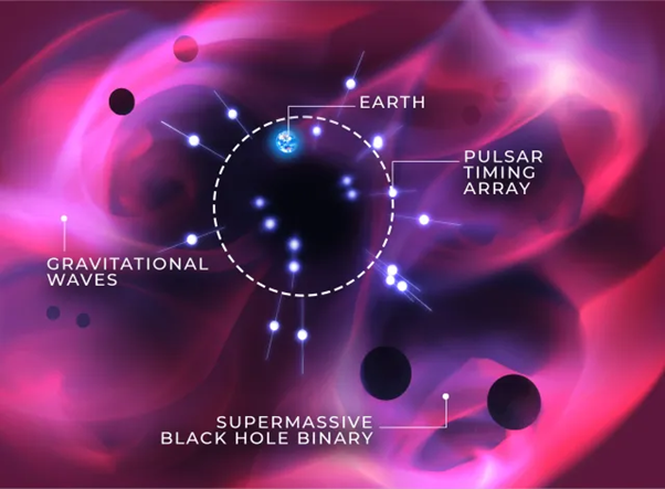 Image by Carl Knox, OzGrav-Swinburne University Image by Carl Knox, OzGrav-Swinburne University At the centre of most galaxies there is a massive black hole. These black holes are very heavy – their mass can be from a million to over a billion times the mass of the Sun and, as such, are appropriately known as supermassive black holes. As galaxies move around in the Universe, they will sometimes merge. When this happens, the supermassive black holes they host tend to migrate toward each other and form a binary system. As these two black holes orbit each other, they warp the fabric of space and time around them and produce gravitational waves which ripple out into the Universe. These gravitational waves complete one full oscillation every year or so as they travel through space and are classified as low frequency gravitational waves. The Universe is full of these supermassive black hole binary systems, and the gravitational waves they emit fill space, combining to form something known as the stochastic gravitational wave background. Scientists are trying to find a gravitational wave signal from this background using a complex network of radio telescopes called a pulsar timing array but it could be years before there is a confirmed detection. For this reason, cosmological simulations are often used to predict what this gravitational wave signal could look like. This type of simulation helps scientists understand the structure and history of the Universe by tracking the flow of matter and energy from a time soon after the Big Bang, up until today. A team of researchers led by postgraduate researcher Bailey Sykes (from Monash University), alongside several OzGrav scientists, including OzGrav Associate Investigator Dr Hannah Middleton, have recently made a new prediction for the strength of this gravitational wave signal. The new estimate is based on data from the MassiveBlack-II simulation, which simulates a massive region of space similar to a chunk of our own Universe. The team made two estimates: one in which the supermassive black holes merge almost instantly once their host galaxies collide, and another in which the two black holes take time to sink towards each other once they pair up in a binary system. This second estimate is important as the gravitational wave output of a binary can change during this time due to the interactions of stars and gas nearby the supermassive binary. The simulated gravitational wave signal using MassiveBlack-II is similar to other predictions in previous studies. It’s smaller than a signal currently detectable by pulsar timing arrays; however, as the sensitivity of telescope technology increases over time, it’s possible a confirmed detection could be just around the corner. The results from the study add valuable insights to existing signal predictions and provide an important reference point for future pulsar timing arrays. Progressively more accurate estimates of the stochastic gravitational wave background can be used to further understand other astrophysical phenomena, including the interactions of stars and gas which impact merging supermassive black holes. Written by Bailey Sykes (Monash University) Australian researchers shape the future of photonic sensing with spin-off company Vai Photonics24/5/2022 In 2021, Australian researchers Lyle Roberts and James Spollard, from The Australian National University (ANU), co-founded Vai Photonics: a spin-off company developing patented photonic sensors for precision navigation. The ARC Centres of Excellence for Engineered Quantum Systems (EQUS) and Gravitational Wave Discovery (OzGrav) played key roles in kickstarting Vai Photonics by providing seed funding towards fundamental LiDAR research, which translated to real-world, industry applications. Now, Advanced Navigation, one of the world’s most ambitious innovators in AI robotics and navigation technology, has announced the acquisition of Vai Photonics with aims to commercialise Roberts and Spollard’s research into exciting autonomous and robotic applications across land, air, sea and space. “The technology Vai Photonics is developing will be of huge importance to the emerging autonomy revolution. The synergies, shared vision and collaborative potential we see between Vai Photonics and Advanced Navigation will enable us to be at the absolute forefront of robotic and autonomy-driven technologies,” said Xavier Orr, CEO and co-founder of Advanced Navigation. Vai Photonics co-founder James Spollard explained: “Precision navigation when GPS is unavailable or unreliable is a major challenge in the development of autonomous systems. Our emerging photonic sensing technology will enable positioning and navigation that is orders of magnitude more stable and precise than existing solutions in these environments. “By combining laser interferometry and electro-optics with advanced signal processing algorithms and real-time software, we can measure how fast a vehicle is moving in three dimensions,” said Spollard. “As a result, we can accurately measure how the vehicle is moving through the environment, and from this infer where the vehicle is located with great precision.” The technology, which has been in development for over 15 years at ANU, will solve complex autonomy challenges across aerospace, automotive, weather and space exploration, as well as railways and logistics. EQUS Director Professor Andrew White applauded the initiative and determination shown by Lyle and James. “Lyle and James are perfect examples of researchers achieving useful outcomes by utilising the funds, mentoring, and guidance available through EQUS’s Translation Research Program, to help pursue the real-world impacts that our research can deliver. These two are what Australia’s research future looks like,” said White. OzGrav Director Professor Matthew Bailes said he was thrilled to see such a positive outcome for our early career researchers that were supported by OzGrav's industry seeding scheme and workshops. "It reinforces the fact that pushing the limits of instrumentation for scientific purposes can often create opportunities for Australian innovators and industry," said Bailes. Professor Brian Schmidt, Vice-Chancellor of the Australian National University said: “Vai Photonics is another great ANU example of how you take fundamental research – the type of thinking that pushes the boundaries of what we know – and turn it into products and technologies that power our lives. “The work that underpins Vai Photonics’ advanced autonomous navigation systems stems from the search for elusive gravitational waves – ripples in space and time caused by massive cosmic events like black holes colliding. “The team have built on a decade of research and development across advanced and ultra-precise laser measurements, digital signals and quantum optics to build their innovative navigation technology. We are proud to have backed Vai Photonics through our Centre for Gravitational Astrophysics and business and commercialisation office. It’s really exciting to see the team take another major step in their incredible journey.” Co-founder Dr Lyle Roberts looks forward to an autonomous future: “This is a huge win for the Vai Photonics team – together with Advanced Navigation we are able to bring our product to market much faster than originally planned. We now have access to leading research and development facilities along with strong distribution channels. We couldn’t have asked for a better outcome and look forward to navigating the future with Advanced Navigation.” This acquisition fits into Advanced Navigation’s larger growth strategy to expand its product and solutions portfolio across deep technology fields that look to solve the world’s greatest challenges facing the autonomy revolution. The acquisition was finalised in April 2022, subject to typical closing conditions. The Vai Photonics team has been integrated into Advanced Navigation’s research and development team, based out of the new Canberra research facility. This article is an amended extract from the original article written by Laura Hayward published on www.advancednavigation.com Research highlight: Deep Follow-up of GW151226 - an ordinary binary or a low-mass ratio merger?17/5/2022 Now that we've been detecting gravitational waves (GWs), we'd like to better understand the systems that generate GWs. The GWs found so far have been from collisions of celestial bodies, like black holes and neutron stars. Once we have detected a GW, we use "Bayesian Inference" to deduce the masses and spins of the objects that shot off the GW (to understand inference, check this video by 3blue1brown). Then we can use our mass and spin deductions to answer: where do these bodies exist in the Universe? Are these colliding bodies huddled together in galaxies or isolated in space? But, it gets tricky to answer such questions if our deductions of the masses and spins are incorrect! So, in my recent study, I have built a "deep follow-up" tool to determine which masses and spins better describe a given GW event. I have used this deep follow-up tool to study the "boxing-day" gravitational wave, GW151226. Initial work deduced that this GW was from the merger of two black holes (BHs), both with standard masses and spins (case A). However, recent work has deduced that the GW might have originated from a strange system: one BH could be much larger than the other and with a faster spin (case B)! A diagram representing these cases can be seen below on the right side of Figure 1. 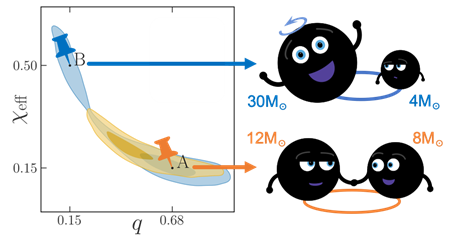 Figure 1: GW151226's two personalities. (Left) The initial and new Bayesian inference results are plotted in orange and blue, respectively. We perform a deep follow-up on the pinned points, cases A and B. (Right) Illustrative versions of what cases A and B represent. Note: black hole cartoons inspired by NASA’s Field guide to black holes. The "deep follow-up" method involves drilling into these cases to determine which binary BH system better describes the GW. First, we pin down some deduced properties of the merging black hole system, such as the mass-ratio q (the ratio of smaller BH mass divided by the bigger BH mass) and xeff (the effective spin of the binary in the z-direction). The pinned value for the initial and new results is on the left side of Figure 1. We then use Bayesian inference at these pinned values. The output allows us to compare case A and case B. We find that both the standard (case A) and irregular (case B) black hole pairs can describe GW151226, giving the event something like a dual-identity! This dual-identity gives GW151226 much more character than initially considered. For example, we initially believed that GW151226 came from an isolated black hole pair. However, a BH pair from case B is more likely to be found at the centre of an active galaxy! So, finally, I wonder: are there other GW events with split personalities? Hopefully, our deep follow-up method will be able to settle these questions. Written by OzGrav researcher Avi Vajpeyi, Monash University. Research highlight: Do massive-star models from various simulations give the same predictions?17/5/2022 Less than one percent of stars in a galaxy are formed with masses exceeding ten solar masses. Despite their rarity, massive stars are believed to play a crucial role in shaping their surroundings, ultimately determining the evolution of the star cluster or galaxy they are located in. Simulations of massive stars are used in many fields of astrophysics, from predicting gravitational-wave event rates to studying star formation and star cluster evolution. However, their rarity and short lives, along with their more extreme properties, mean that the evolution of massive stars is riddled with many uncertainties. These uncertainties are compounded by the fact that accurate modeling of stellar lives in three dimensions is prohibitively expensive in terms of computing resources. Therefore, stellar evolution is modeled using one-dimensional (1D) codes, with only radius or mass as the spatial coordinate. Three-dimensional (3D) processes such as rotation and mixing are approximated using 1D analogs, which generally give good results for most stars. However, in the envelopes of massive stars (and in low-mass stars at the late stages of evolution), the use of these 1D analogs can lead to numerical challenges for stellar evolution codes. The time steps of the computation become very small (of the order of days) and 1D codes struggle to compute the further evolution of the star. While researchers are trying to find the solution using multidimensional models, 1D stellar evolution codes adopt different pragmatic methods to push the evolution of stars beyond these numerical challenges. These methods, along with other uncertain parameters in the evolution of massive stars, can significantly alter the predictions of massive stellar models. To get an idea of how different their predictions can be, we examined models of massive stars from five different datasets, each computed using a different 1D code. We found that certain aspects of these predictions were extremely sensitive to the modeling assumptions employed by different codes. For example, in Figure 2, the different sets of massive star models show a variation of about 20 solar masses in their predictions of the mass of the black hole formed. We also found huge differences in the radial evolution of these stellar models and thus the ionizing radiation produced by them. These differences can directly affect binary evolution and the simulations of stellar environments, such as galaxies. Lasers support certain structures of light called ‘eigenmodes’. An international collaboration of gravitational wave, metasurface and photonics experts have pioneered a new method to measure the amount of these eigenmodes with unprecedented sensitivity. In gravitational wave detectors, several pairs of mirrors are used to increase the amount of laser light stored along the massive arms of the detector. However, each of these pairs has small distortions that scatters light away from the perfect shape of the laser beam. This scattering can cause excess noise in the detector, limiting sensitivity and taking the detector offline. From the recently submitted study, Prof Freise (from Vrije Universiteit Amsterdam) says: “Gravitational wave detectors like LIGO, Virgo and KAGRA store enormous amount of optical power – in this work, we wanted to test an idea that would let us zoom in on the laser beam and look for the small wiggles in power that can limit the detectors’ sensitivity.”Lasers support certain structures of light called ‘eigenmodes’. An international collaboration of gravitational wave, metasurface and photonics experts have pioneered a new method to measure the amount of these eigenmodes with unprecedented sensitivity. A similar problem is encountered in the telecoms industry where scientists want to use multiple eigenmodes to transport more data down optical fibres. OzGrav researcher and lead author Dr Aaron Jones (The University of Western Australia) explains: “Telecoms scientists have developed a way to measure the eigenmodes using a simple apparatus, but it’s not sensitive enough for our purposes. We had the idea to use a metasurface and reached out to collaborators who could help us fabricate one.” In the study, the proof-of-concept setup the team developed was over 1000x more sensitive than the original way developed by the telecoms scientists. The researchers will now look to translate this work into gravitational wave detectors, where the additional precision will be used to probe the interiors of neutron stars and test fundamental limits of general relativity. OzGrav Chief Investigator, Prof Zhao (from University of Western Australia) says: “Solving the mode sensing problem in future gravitational wave detectors is essential, if we are to understand the insides of neutron stars.” Written by Dr Aaron Jones (The University of Western Australia). Double neutron star (DNS) systems in tight orbits are fantastic laboratories to test Einstein's general theory of relativity. The first such DNS system, commonly known as Hulse-Taylor binary pulsar, provided the first indirect evidence of the existence of gravitational waves and the impetus to build LIGO. Since then, discovering such binary systems has been a major impetus for large scale pulsar surveys. Although over 3000 pulsars have been discovered in our Galaxy, we have only found 20 DNS systems. Why are they so rare? DNS systems are the endpoints of complex and exotic binary stellar evolution. In the standard model, the two stars must survive multiple stages of mass transfer, including common envelope phases, and not one but two supernova explosions. Prior to the second supernova, the survival of the binary depends on the kicks imparted by the second supernova explosion and the amount of matter ejected. It appears that it’s quite rare for binaries to survive all of these events. Those that do leave behind many insights into binary stellar evolution. Finding binary pulsars is more difficult than solitary ones. Acceleration makes their pure tones evolve in time due to the changing Doppler shifts, greatly increasing the complexity of the searches and the amount of computational time required. Fortunately, OzGrav scientists have access to the OzSTAR supercomputer at Swinburne University of Technology with its graphics processing accelerators (GPUs). We use OzSTAR to search the High Time Resolution Universe South Low Latitude pulsar survey (HTRU-S LowLat) for accelerated pulsars. In our recently accepted paper, we have presented the discovery and results from 1.5 years of dedicated timing of a new DNS system, PSR J1325-6253 using the Parkes 64m radio telescope (now also known as Murriyang). By timing when the pulses arrived at Earth, we found that PSR J1325-6253 is in a small orbit of 1.81 d. Its orbit deviates from a circularity with one of the lowest orbital eccentricities known for a DNS system (e=0.064). The elliptical orbit advances its point of closest approach (periastron) to its companion star as predicted by the theory of general relativity. The advance of periastron enabled us to determine the total mass of the system, and we found it near that of other DNS systems. The low eccentricity of the orbit meant that there was almost no mass loss in the final supernova explosion beyond the energy carried off in neutrinos, and that it was a so-called ultra-stripped supernova. Such supernovae would be very sub-luminous, and usually invisible if too far from the Sun. This rare find provided a new insight into how stars explode, and the neutron stars they leave behind. Written by OzGrav PhD student Rahul Sengar, Swinburne University of Technology https://ui.adsabs.harvard.edu/abs/2022MNRAS.tmp..798S/abstract One promising source of gravitational waves, not yet detected, is rapidly rotating neutron stars. Neutron stars are hyperdense leftovers from stellar evolution, formed from the core of stars of a certain weight class (not too light, not too heavy). Instead of collapsing all the way to a black hole, they stop just short, ultimately packing the mass of the Sun into a ball about 10 kilometers across. Neutron stars are known to spin rapidly, up to hundreds of revolutions per second, and they are so fantastically dense that even a small (millimeters high!) mountain will emit continuous gravitational waves (CWs) that are potentially detectable by LIGO.
However, detecting these gravitational waves is no mean feat. Although they are continuously emitted (as opposed to gravitational waves from merging neutron stars and black holes, which last no longer than a few minutes), they are very quiet, and digging these signals out of the noise is very challenging. The task is complicated by the fact that we often have to search over a wide range of gravitational wave frequencies and sky locations, since we do not know where a gravitational wave-emitting neutron star might be in the sky, or how fast it might be spinning. All of these facts combine to create a computational challenge which is formidable – many searches for these continuous gravitational waves are limited by the available computing power. This motivates us to make these searches as computationally efficient as possible, and to take advantage of all resources available. One important resource which has so far been under-utilised in CW searches is graphics processing units (GPUs). Although initially designed, as their name suggests, for crunching numbers in service of producing 3D graphics, over the last twenty years they have proven themselves to be equally useful in many scientific applications, often providing significant speedups over CPUs. Most supercomputing clusters are now equipped with some number of high-powered GPUs for exactly this reason. Our recent paper [1] presents the implementation of one very common method used in CW searches, the “F-statistic”, on GPUs. We show that, using our implementation, one GPU can do the work of 10–100 CPU cores, unlocking a significant new source of computational power to be used in analyses using the F-statistic. We also show that achieving these speeds does not require sacrificing sensitivity, which is extremely important given the faintness of the signal we’re looking for. Finally, as a demonstration of the utility of this new implementation in a real-world context we run a small search for continuous gravitational waves from four recently discovered neutron stars spinning between 200 and 400 times per second. The search consumes 17 hours of GPU time, in contrast to the 1000 hours of CPU time which would have been required to run the equivalent search. This work will allow more CW searches to take advantage of the computing power offered by GPUs in the future and continue to push towards the first detection of continuous gravitational waves. [1] https://dx.doi.org/10.1088/1361-6382/ac4616 Written by OzGrav PhD student Liam Dunn, the University of Melbourne. Gravitational-waves are ripples in space-time created by distant astronomical objects and detected by large complex detectors (like LIGO, Virgo, and KAGRA). Finding gravitational-wave signals in detector data is a complicated task requiring advanced signal processing techniques and supercomputing resources. Due to this complexity, explaining gravitational-wave searches in the undergraduate laboratory is difficult, especially because live demonstration using a gravitational-wave detector or supercomputer is not possible. Through simplification and analogy, table-top demonstrations are effective in explaining these searches and techniques.
A team of OzGrav scientists, across multiple institutions and disciplines, have designed a table-top demonstration with data analysis examples to explain gravitational-wave searches and signal processing techniques. The demonstration can be used as a teaching tool in both physics and engineering undergraduate laboratories and is to be published in the American Journal of Physics. Link to preprint here. Lead author of the project James Gardner (who was an OzGrav undergraduate student at the University of Melbourne during the project and now a postgraduate researcher at the Australian National University) explains: “This demonstration offers some charming insights into a live field of research that students like me should appreciate for its recency compared to the age of most ideas they encounter”. Table-top gravitational-wave demonstrations Gravitational wave detectors are very complicated and huge — laser light is sent down tubes kilometres long! But the workings of a gravitational-wave detector can be demonstrated using table-top equipment. Researchers at the University of Adelaide have developed AMIGO to do just that! Deeksha Beniwal, co-author of this study and an OzGrav PhD student at the University of Adelaide explains: “With AMIGO, the portable interferometer, we can easily share how LIGO uses the fundamental properties of light to detect ripples from the most distant reaches of the universe.” This work expands on the portable interferometer demonstration with a selection of examples for students in both physics and electrical engineering. Changrong Liu, co-author of this study and an OzGrav PhD student in electrical engineering at the University of Melbourne, explains: “This project offers a great opportunity for electrical engineering students like me to put some of their knowledge into the real and exciting physical world”. Explaining the hunt for continuous gravitational waves To demonstrate searching for signals with the table-top set up, the team first needed to make some fake signals to find! This is where the analogy of sound comes in: audio signals are used to mimic gravitational waves interacting with the detector. The team focused on demonstrating the hunt for continuous gravitational waves, a type of gravitational wave that hasn’t been detected yet. Hannah Middleton, co-author of the study and an OzGrav Associate Investigator (at the University of Birmingham), explains: “Continuous waves are long-lasting signals from spinning neutron stars. These signals should be present in the detector data all the time, but the challenge is to find them. This demonstration is directly inspired by the techniques developed by OzGrav physicists and electrical engineers in the hunt for continuous gravitational waves!“ A continuous wave signal can be slowly changing in frequency, so the audio signals used in this demonstration also change in frequency. ”We show, through using sound as an analogue to gravitational waves, what it takes to detect a wandering tone: a long signal that slowly changes pitch like whalesong,” explains Gardner. Prof. Andrew Melatos, co-author of this study and leader of the OzGrav-Melbourne node explains: “We hope that undergraduate educators will emphasize the cross-disciplinary spirit of the project and use it as an opportunity to speak more broadly to students about careers at the intersection of physics and engineering. The future is very bright career-wise for students with experience in cross-disciplinary collaboration” Written by OzGrav Assoc. Investigator Hannah Middleton (University of Birmingham) and OzGrav postgrad researcher James Gardner (ANU). Scientists from the ARC Centre of Excellence for Gravitational Wave Discovery and the University of Cologne (Germany) have developed new simulations of stars’ complicated lives, boosting research on how new stars are born and how old stars die. These stellar evolution simulations, called the BoOST project, can be used to predict how often gravitational waves should be detected—gravitational waves (ripples in space-time) are expected to happen when the death throes of two stars merge. The project can also help to study the birth of new stars out of dense clouds in space. Not all stars are the same. Sure, they all look like tiny, shining points on the sky, but it's only because they are all so far away from us. We only see stars that are close and bright enough. The rest, we may see with telescopes. If you use a telescope to measure the colour of a star, it turns out that some stars are rather red, some are blue, and some are in between. And if you measure their brightness, it turns out that some are brighter than others. This is because a star’s colour and brightness depend on its heaviness and age, among other things. It's a complex theory that has been developing since the age of the first computer simulations in the 1950's. Today, we have computer simulations that can predict how a star lives its complicated life, from birth until death. This is called 'stellar evolution' and applies to the stars that are close enough for us to observe with telescopes. But there are stars so far away that even the largest telescopes can’t view them clearly; there are stars hiding inside thick clouds (yes, such clouds exist in space); and there are dead and dying stars that used to exist once upon a time. Is there a way to study these unreachable stars to observe similarities and differences from those that we can actually see? Stellar evolution simulations can help here because we can simulate any star—even the stars we can’t see. For example, stars that were born soon after the Big Bang used to have a different chemical composition than those stars that we see today. From computer simulations, we can figure out how these early stars looked like: their colour, brightness etc. What's more, we can even predict what happens to them after they die. Some of them become black holes, for example, and we can tell the mass of this black hole based on how heavy the star had been before it exploded. And this presents more opportunity for discovery! For example, it’s possible to predict how often two black holes merge. This gives us statistics about how many times we can expect to detect gravitational waves from various cosmic epochs. Or, when trying to understand how stars are born out of dense clouds, we can count the number of hot bright stars and the number of exploding stars around these cloudy regions. Both hot bright stars and explosions change the clouds' structure and influence the birth of new stars in delicate ways. 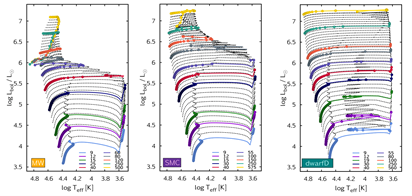 The BoOST project predicts how stars live their lives. These diagnostic diagrams show stellar evolution simulations of massive and very massive stars (colourful labels in solar mass units). These are stellar lives in the Milky Way (left), in the Small Magellanic Cloud (middle) and in a metal-poor dwarf galaxy (right). One line on these diagrams belongs to one star’s whole life from birth to death. Their brightness is shown to change on the vertical axis, and their apparent ‘colour’ (surface temperature, with lower values meaning red and higher, blue) on the horizontal axis. These simulations can give a boost to research on how new stars are born and how old stars die. Lead scientist on the study Dorottya Szécsi from the University of Cologne says: ‘Much like the theory of stellar life got a boost in the 1950's from computerization, we hope our BoOST project will contribute to other research fields, because both the birth of new stars and the ultimate fate of old stars depend on how stars live their complicated and very interesting lives’. “Given the importance of massive stars in astrophysics, from determining star formation rates to the production of compact remnants, it is essential that our theoretical models of stars keep pace with advancements in observations,” says OzGrav postdoctoral researcher and study co-author Poojan Agrawal. Link to paper: https://www.aanda.org/articles/aa/full_html/2022/02/aa41536-21/aa41536-21.html Pulsars, a class of neutron stars, are extremely predictable stars. They are formed from the hearts of massive stars that have since collapsed in on themselves, no longer able to burn enough fuel to fend off the crushing gravity the star possesses. If the conditions are right, the star will continue to collapse in on itself until what’s left is a remnant of what was there before, usually only about the size of the Melbourne CBD, but 1-2 times as heavy as our Sun, making these some of the densest objects in the Universe.
These stars don’t produce much visible light, but from their magnetic poles, they emit surprisingly bright beams of radio waves. If we’re lucky, as the star rotates, those beams will wash over the Earth and we observe ‘pulses’. While most pulsars spin around in about a second, there is a subclass of these stars that spin around in just a few thousandths of a second—they’re called ‘millisecond’ pulsars. Observing the pulses from these millisecond pulsars gives physicists clues to many questions, including testing General Relativity and understanding the densest states of matter. But one of the main goals of observing these incredibly fast, dense stars is to detect ultra-long wavelength gravitational waves. And by long, we mean many light-years long. These gravitational waves distort space-time between us and the pulsars, causing the pulses to arrive earlier or later than expected. It’s likely that these gravitational waves come from a background produced by all the binary supermassive black holes in the Universe, which form from galaxies crashing into one another. As part of OzGrav, we try and detect this gravitational wave background by looking at collections of the most predictable stars (called pulsar timing arrays) and measuring how they change over time. We did this by using the world’s most sensitive radio telescopes, including the Australian Murriyang telescope (also known as the Parkes telescope) and the ultra-sensitive MeerKAT array telescope in South Africa. But it’s not quite that simple. From our observations with MeerKAT we found that the most precisely timed (read: predictable) pulsar, J1909-3744, was misbehaving. We found that the pulses were changing shape, with bright pulses arriving earlier and narrower than faint ones. This lead to greater uncertainty in its predicted emission. Fortunately, we were able to establish a method to account for this change and time tag the pulsar more precisely than ever before. This method could be of use for other pulsars and will be important when more advanced telescopes are available in the future. Written by OzGrav PhD student Matthew Miles, Swinburne University Caption: Artist’s impression of continuous gravitational waves generated by a spinning asymmetric neutron star (left) accreting matter from a companion star (right). Credit: Mark Myers, OzGrav-Swinburne University of Technology Key points:
Take a star similar in size to the Sun, squash it down to a ball about twenty kilometres across and you’d get a neutron star: the densest object in the known Universe. Now set your neutron star spinning at hundreds of revolutions per second and listen carefully. If your neutron star isn’t perfectly spherical, it will wobble a bit, causing it to continuously send out faint ripples in the fabric of space and time. These ripples are called continuous gravitational waves. So far, these elusive continuous gravitational waves haven’t been detected; however, in a recent study, an international collaboration of scientists, led by Australian OzGrav researcher Julian Carlin (from the University of Melbourne), searched for them from a specific category of neutron star: accreting millisecond X-ray pulsars (AMXPs). To break it down, AXMPs are:
As AMXPs accumulate matter from their companion star, they’re likely to send out stronger signals than a lone neutron star. This is because the strength of a neutron star’s signal is proportional to its asymmetry. Astronomers theorise that this build up of matter on the AMXPs could create small mountains on the surface as material is funnelled by the magnetic field onto the magnetic poles. This is illustrated by the artist's impression shown in Figure 1. This search uses data from the third observing run of LIGO, Virgo, and KAGRA which lasted from April 2019 to March 2020. The team searched for continuous gravitational waves from 20 AMXPs - 14 of which hadn’t been searched before. The search method used in this work is the result of a collaboration between physicists and engineers at the University of Melbourne. “The methods we are using to search for continuous gravitational waves from spinning neutron stars are similar to those used in speech recognition software!” said Hannah Middleton (an OzGrav postdoc at both the University of Melbourne and Swinburne University). Unfortunately, continuous gravitational waves were not convincingly detected this time. However, as detector technology and data analysis algorithms keep improving, it’s possible that a detection will be made in the next observing run. Julian Carlin said: “It may turn out that the weak candidates we’ve spotted here are the first signs of a real signal, and we just need a little bit more data to pull it out of the noise”. “If a detection were made, it’d allow us to peer into the hearts of neutron stars ━ teaching us how matter behaves in extremely dense environments,” he continues. “Detecting continuous gravitational waves from neutron stars would give us great insights into how these fantastic astronomical clocks really tick.” “The hunt for continuous gravitational waves is one of the top challenges in gravitational wave science”, said Andrew Melatos, an OzGrav Chief Investigator whose research group at the University of Melbourne has been chasing these tiny signals for more than a decade. “Pulsars are one of Nature’s most bountiful gifts. Their radio signals revolutionised astronomy, shedding new light on everything from the gas between the stars to Einstein’s theory of gravity and the strongest magnetic fields in the Universe. Who knows what surprises their gravitational wave murmurs will reveal?” Dr. Karl Wette, an OzGrav research fellow at The Australian National University and co-chair of the LIGO continuous wave working group, said: "Gravitational waves are becoming an essential tool for fundamental physics and astronomy. We've now heard the echoes of nearly 100 pairs of black holes and neutron stars smashing into each other. We're keeping our ear to the ground, and hope to pick out the tell-tale hum of a rapidly-spinning neutron star in the coming years. Australia has a strong track record in this area of research, and it's particularly pleasing to see Australian students and junior researchers making important contributions.” "With improved detectors in the fourth observation run, the number of detections is expected to increase manifold,” said OzGrav PhD student Chayan Chatterjee at the University of Western Australia. “So, it will be extremely exciting to watch out for more continuous gravitational wave candidates as well as other ground-breaking discoveries!" Read the full scientific article https://journals.aps.org/prd/abstract/10.1103/PhysRevD.105.022002 Link to the LIGO Science Summary: https://www.ligo.org/science/Publication-O3LMXBsAMXPs/. |
|
- Home
- About
-
Our People
- Chief Investigators
- Partner Investigators
- Associate Investigators
- Postdocs and Students >
- Professional & Outreach staff
- Governance Advisory Committee
- Scientific Advisory Committee
- Executive Committee
- Equity & Diversity Committee
- Early Career Researcher Committee
- Professional Development Committee
- Research Translation Committee
- OzGrav Alumni
- Research Themes
- Education and Outreach
- Events
- News/Media
- Contact Us
- Home
- About
-
Our People
- Chief Investigators
- Partner Investigators
- Associate Investigators
- Postdocs and Students >
- Professional & Outreach staff
- Governance Advisory Committee
- Scientific Advisory Committee
- Executive Committee
- Equity & Diversity Committee
- Early Career Researcher Committee
- Professional Development Committee
- Research Translation Committee
- OzGrav Alumni
- Research Themes
- Education and Outreach
- Events
- News/Media
- Contact Us

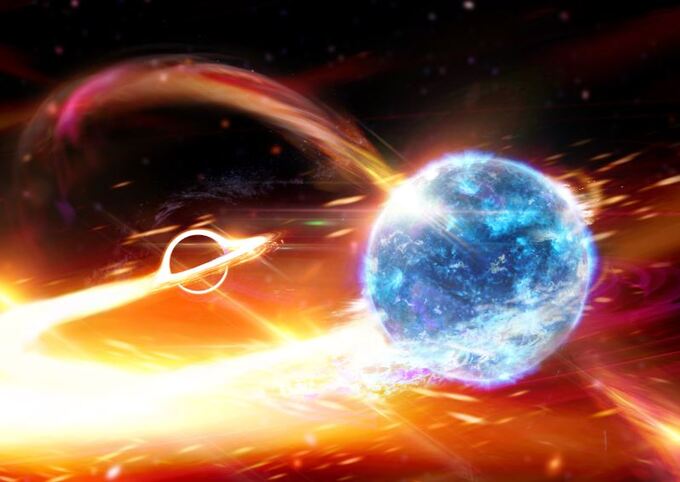
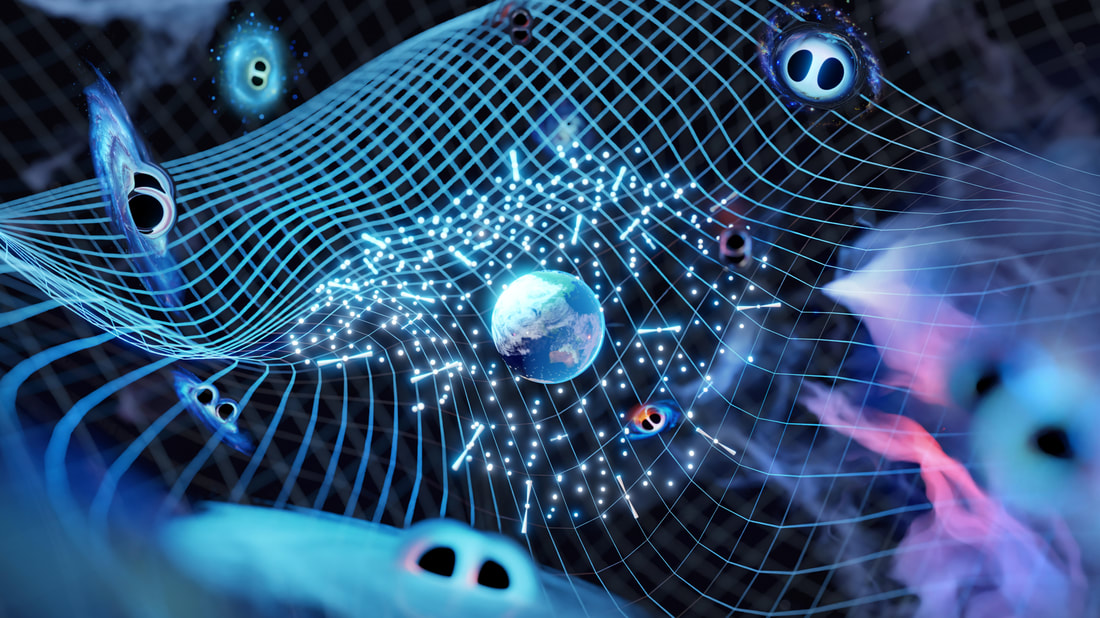
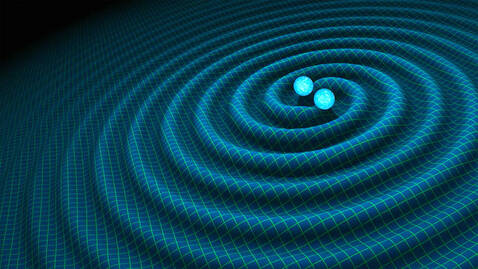
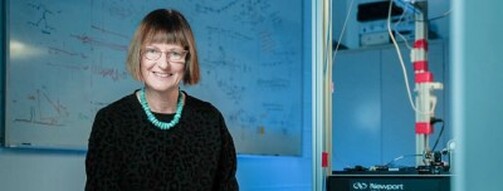
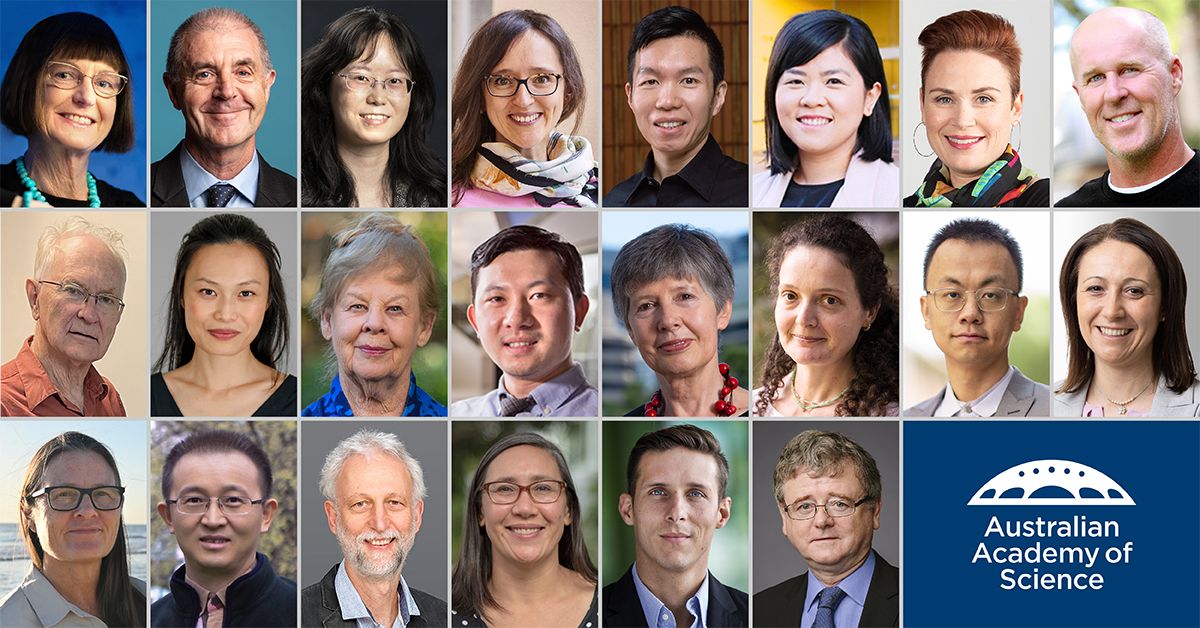
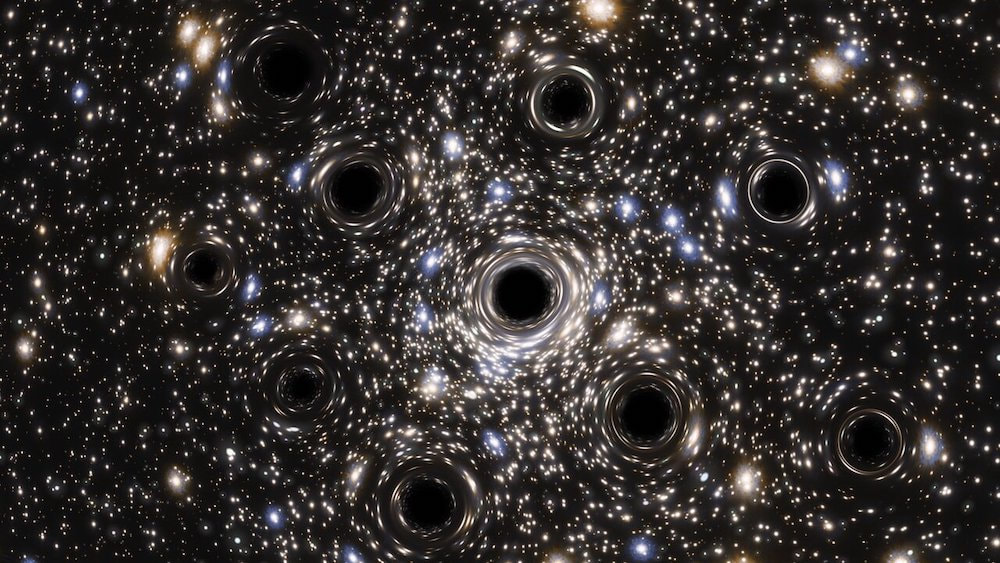
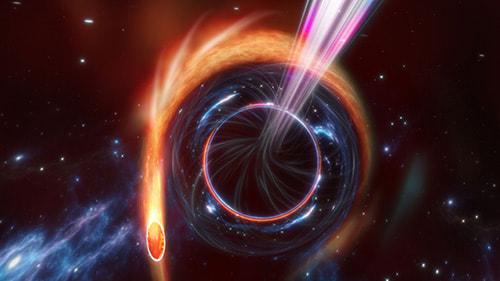
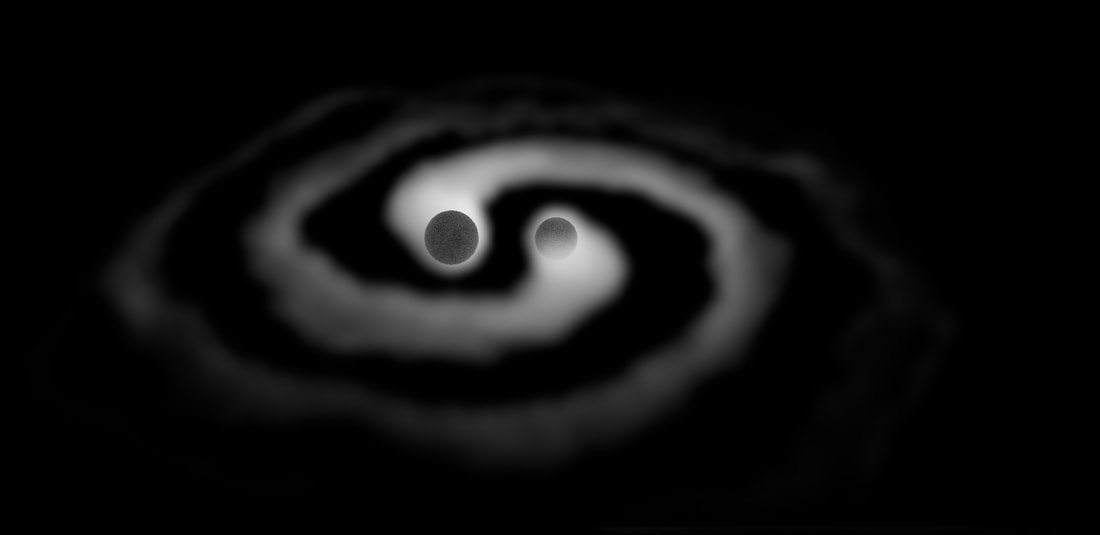

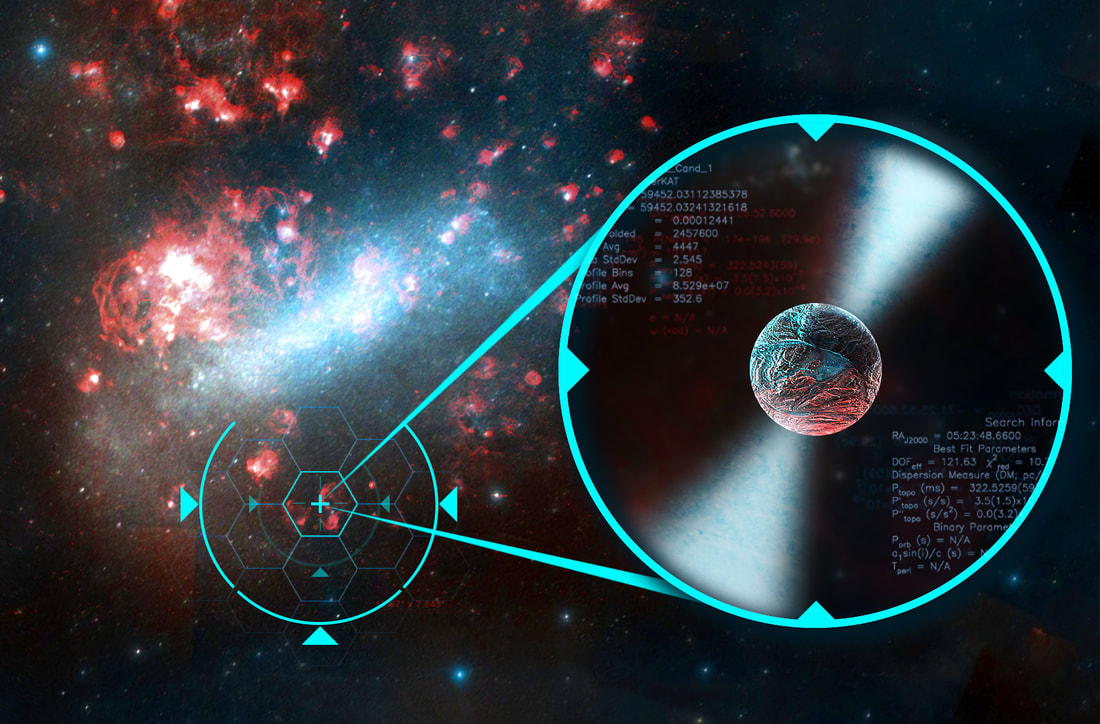
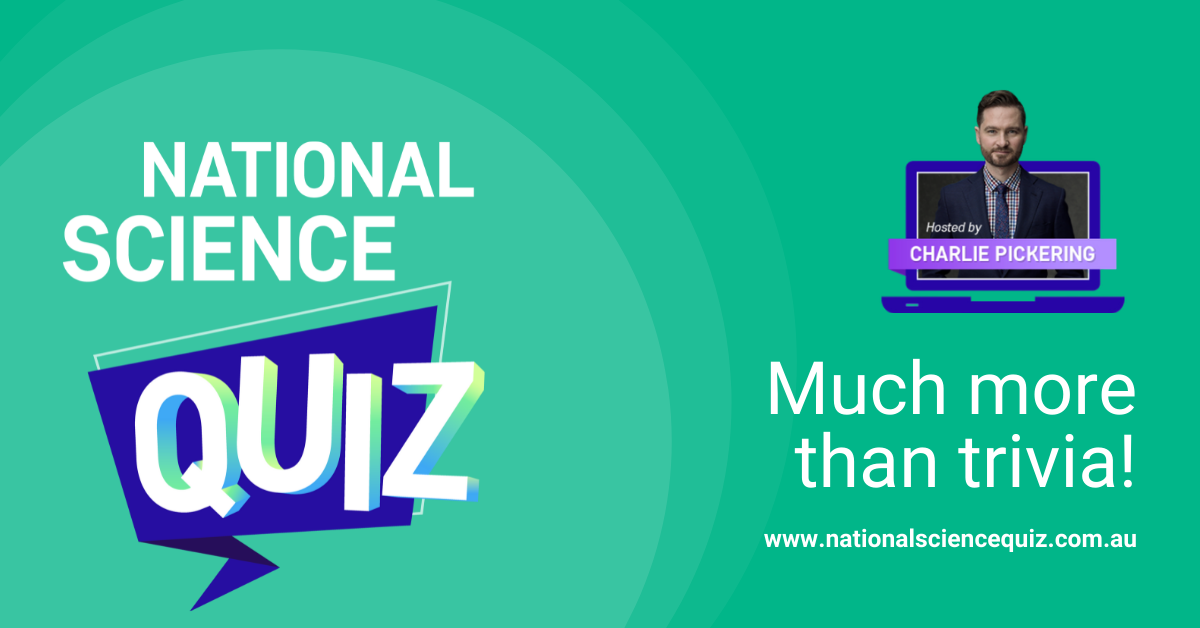
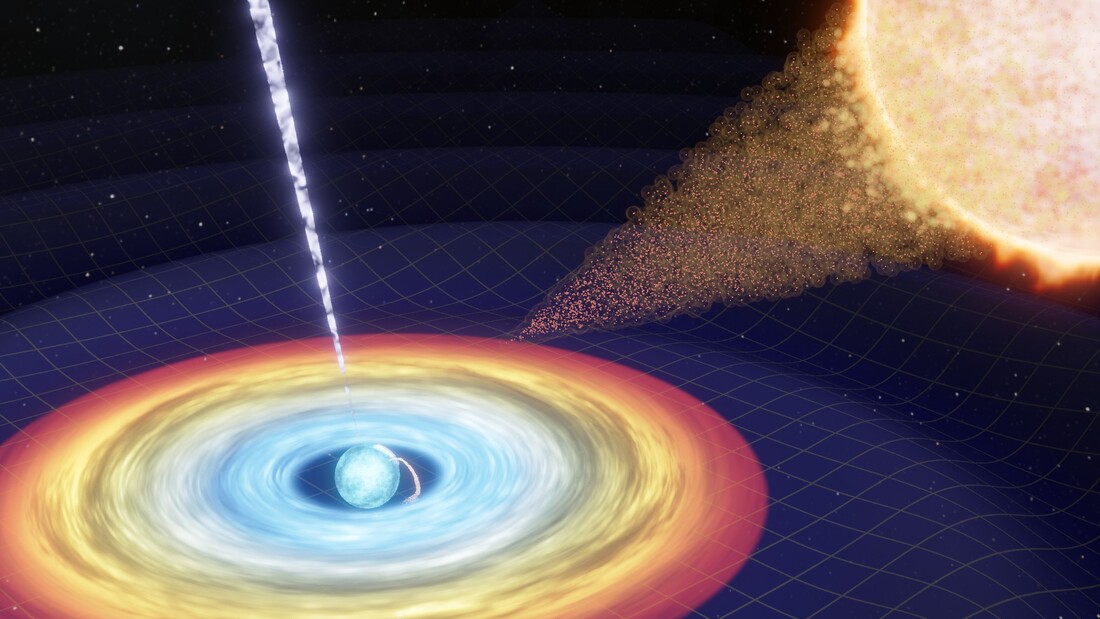


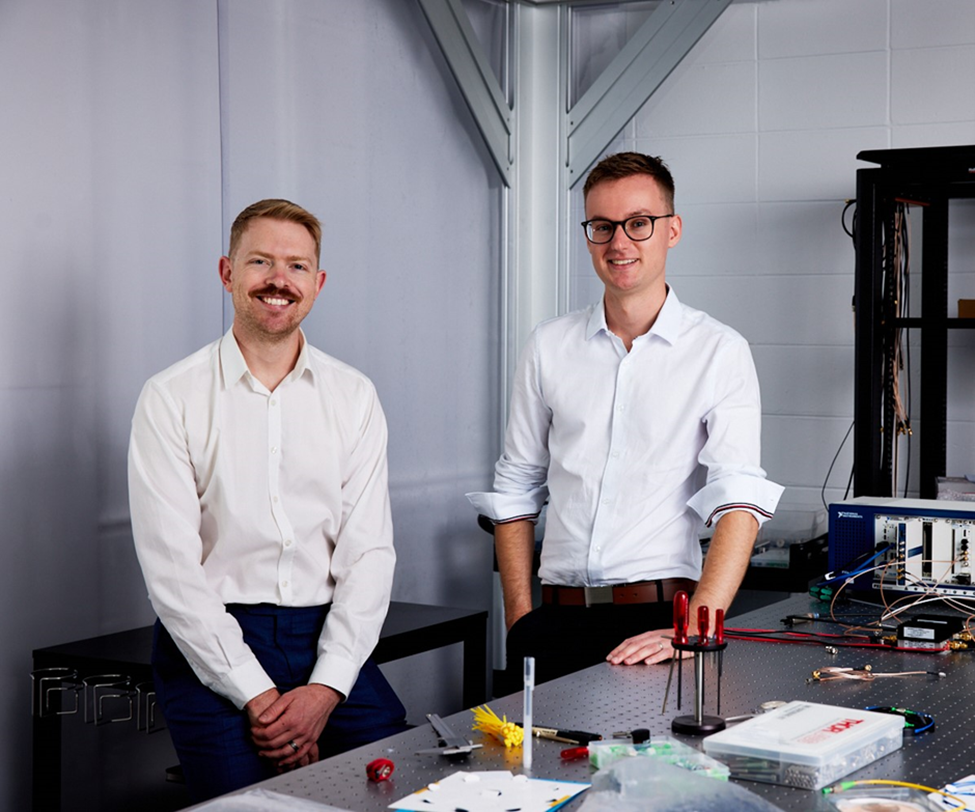

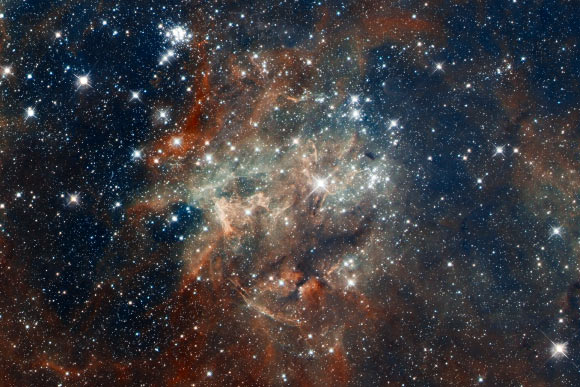
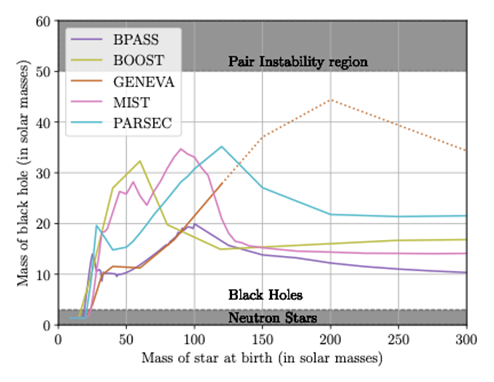
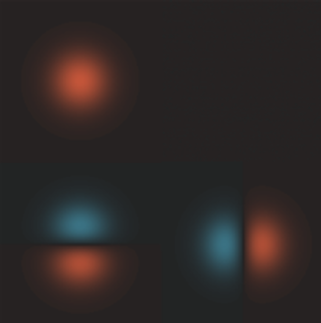
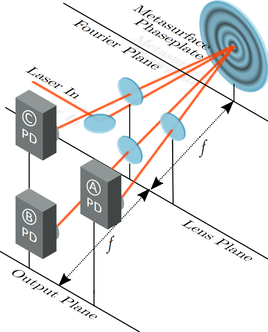
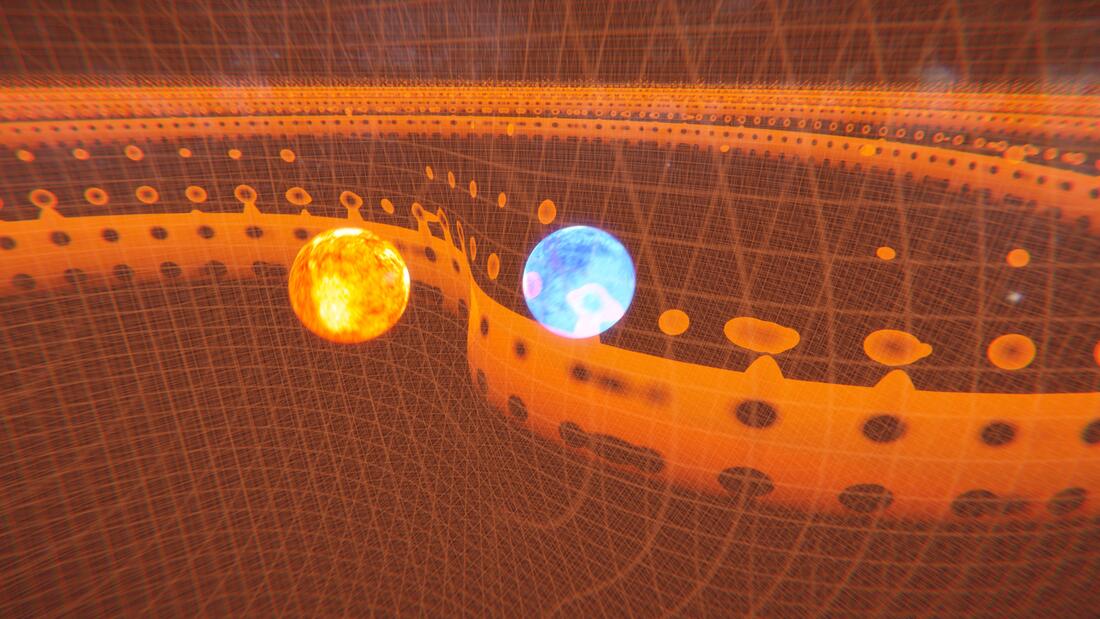
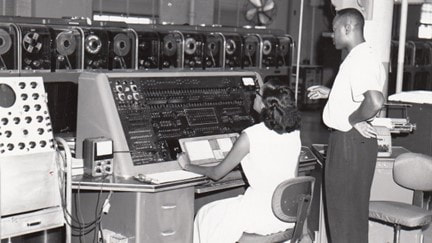
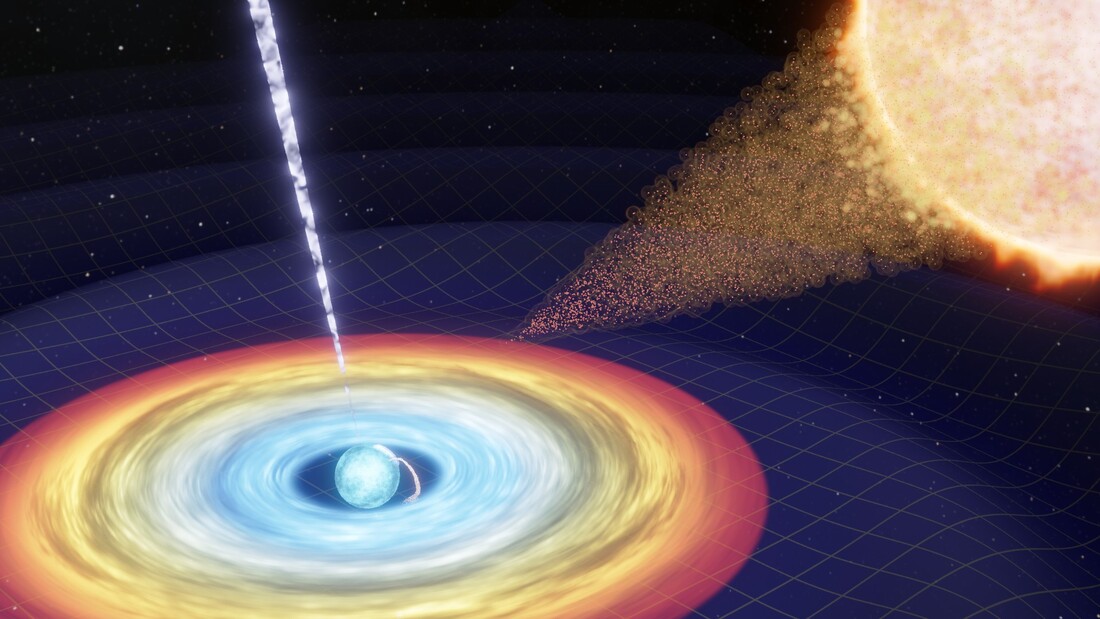
 RSS Feed
RSS Feed








